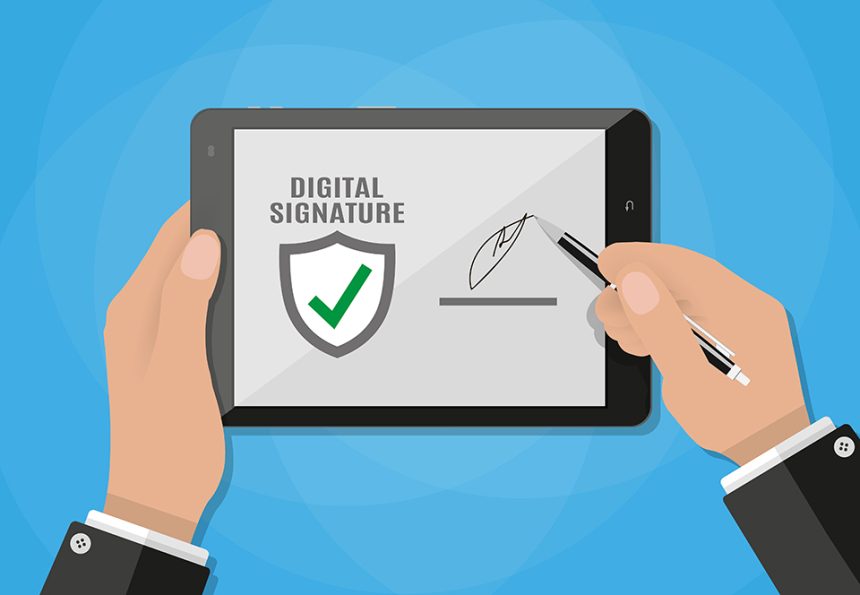Businesses constantly seek ways to streamline processes and increase efficiency in today’s fast-paced digital world. Signing and managing documents is one area that has made significant strides in recent years. The time-consuming, ineffective, and error-prone process of printing, signing, and scanning documents by hand can be used instead. Electronic signatures have allowed companies to streamline and speed up their workflows while adhering to the law. All you have to do is learn how to make a signature to get started. This article will explore the benefits of integrating e-signatures into your workflow and how they can streamline your processes.
Enhanced Efficiency and Productivity
E-signatures can be incorporated into your workflow to eliminate the need for manual handling of paper documents. Printing, signing, scanning, and sending documents can take a long time and impede essential business operations. You can quickly and easily digitally sign documents with e-signatures, which cuts down on the time and effort needed to complete transactions. Your team’s productivity rises due to this improved efficiency, freeing them up to work on more crucial projects.
Additionally, e-signature solutions frequently offer tools like templates and automated workflows. Using these features, you can further simplify the document creation and signing process. You can eliminate tedious work and lower the possibility of error by developing reusable templates for frequently used documents.
Real-time Collaboration
Collaboration on documents in real-time is one of the main benefits of e-signatures. Traditional document signing procedures frequently entail numerous iterations of back-and-forth communication, which delays and confounds the process. Multiple stakeholders can access and sign documents simultaneously using e-signatures, eliminating the need for in-person meetings or protracted email exchanges. This expedites the approval procedure and makes decision-making quicker, enhancing your workflow.
Moreover, many e-signature platforms have integrated collaboration features like comments, annotations, and version control. Team members can track changes, offer suggestions, and provide feedback using these features inside the document itself. E-signatures encourage effective communication and lower the possibility of misunderstandings or misinterpretations by enabling seamless collaboration. This saves time and improves the final signed documents’ precision and quality.
Enhanced Security and Legal Compliance
Concerns about the security and legitimacy of electronic signatures are common among businesses. However, e-signature programs provide strong security safeguards to guarantee the accuracy and legitimacy of signed documents. Sophisticated encryption and authentication protocols provide protection from tampering and unauthorized access. Additionally, the United States, the European Union, and many other nations worldwide have made e-signatures legally binding. You can guarantee compliance with pertinent laws and regulations while upholding the highest security standards by incorporating e-signatures into your workflow.
Cost and Resource Savings
The printing, scanning, and storage of physical documents required for the customary paper-based document signing process add up quickly. Furthermore, the time spent on manual administrative tasks can increase and result in higher labor costs. Companies can cut or get rid of these costs by switching to e-signatures. Using digital signatures, you can reduce your use of paper, ink, storage space, and postage.
Improved Customer Experience
Customers expect a seamless and convenient experience when interacting with businesses in the modern digital age. By incorporating e-signatures into your workflow, you can give your clients an easier and faster signing experience. Customers can electronically sign documents using any internet-connected device from any location, whether contracts, agreements, or consent forms. This reduces the need for in-person meetings and back-and-forth mailing of documents, increasing customer satisfaction and loyalty.
Streamlined Audit Trails and Document Management
Businesses, especially those operating in regulated industries, must accurately record all document transactions. Strong audit trail capabilities that provide a thorough history of document activities, including who signed, when they signed, and any changes made along the way, are features of e-signature solutions. This simplifies the auditing procedure and streamlines compliance efforts. Additionally, digital document management systems make retrieving and tracking signed documents significantly easier than physical documents.
You can keep track of each stage of the signing process, including when documents were sent, viewed, and signed, using e-signature platforms. In the event of regulatory audits or legal disputes, these thorough audit trails offer a transparent and verifiable transaction record. Digital document management systems also simplify classifying, archiving, and looking for signed documents. To increase security and control, you can set access permissions to ensure only authorized users can view or edit the documents.
Conclusion
E-signatures can be integrated into your workflow for various reasons that greatly speed up your operations. Digital signatures are revolutionizing how businesses handle document signing, improving efficiency and productivity as well as security, cost savings, and customer satisfaction.














